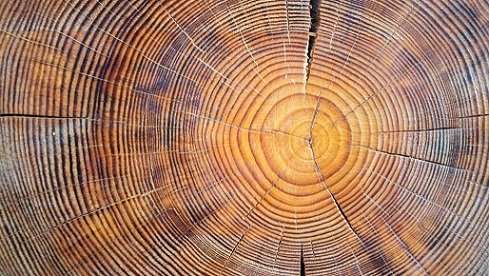Supernova Connects with Tree-Rings
It’s been suggested that astronomers are seeking to take a look at tree rings and chart the history of supernovas that once lit up our skies and flooded our planet with radiations.
Stars exploding relatively close to Earth may have left fingerprints in our forests and jungles was reckoned by Robert Brakenridge, a geoscientist at the University of Colorado Boulder’s Institute of Arctic and Alpine Research, which could be used to build a timeline of epic eruptions.
The trick is to pay close attention to the inside of the circular layers of the trunk that form as trees grow to contain an amount of carbon-14. When neutrons, smashed off atoms by incoming cosmic rays, merge with nitrogen produces radiocarbon aka Carbon-14 in Earth’s atmosphere. The quantity of some of that carbon isotope which is absorbed into the trees as they grow can be measured.

Carbon-14 in Tree Rings
Exploding of faraway stars increased radiations because higher-than-expected levels of carbon-14 were found which blow away extreme levels of cosmic rays, causing a rush in radiocarbon that’s absorbed by the plants. Brakenridge thinks that when the Earth was showered with more cosmic rays than usual, must have resulted in the calculations spikes in radiocarbon detected in tree rings. He argued when massive old stars erupted nearby as supernovas resulted in these radiation-heavy periods.
Similar Findings
These findings are not the new ones as a team in Japan investigated the effect of the supernova on radiocarbon levels in trees back in 2005. Although they suggested any variation in the isotope is due to standard solar rays rather than dramatic explosions rather than finding solid evidence linking two changes. Another look needs to be taken by the scientific world as per the thinking of Brakenridge.
On Wednesday he said that terrestrial events are being administered that is begging for an explanation. Only two possibilities are present for the explanation of the presence of isotope that is a solar flare or a supernova. And the theory for the supernova has been dismissed way too fast.
Anomalies: Within Earth
The detail in a paper published last week in the International Journal of Astrobiology said that he can trace four radiocarbon increases to four separate supernovas. A giant star in the Vela constellation located 815 light-years away burst accounted for the oldest explosion dates back more than 13,000 years increasing the level of carbon-14 on Earth by three percent.
Brakenridge told The Register that these are small radiocarbon isotope anomalies, peaks in concentration, in tree rings at particular years as dated by tree-ring scientists. We can reliably identify the year how old the ring is as the tree rings in many trees are annual. Or we could say that assuming you can get an old-enough sample, the carbon-14 spikes in trees could pinpoint the date a sun detonated more accurately than studying the heavens.

Tree Can Help Decode Space
Brakenridge said that astronomers can only roughly date the times of the supernovas from their remnant nebula as the carbon-14 anomaly can be pinpointed to a specific event regarding the energy of the supernova and its actual age. This helps get at the basic physics of the explosion as the supernova energies vary widely.
Conclusions can’t be drawn as the study’s sample size of four is small, however, there are hopes of the use of this dating technique in the future as per Brakenridge. His work is a contribution towards the start of the process as it proposes strong candidates for specific known supernova events and carbon-14 anomalies. Atleasast we can state that the more we know about the Universe, the more things comes up asking to discover it further.
